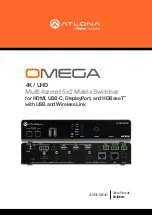
A-8
MAX TNT Hardware Installation Guide
Slot Card Specifications and Connection Information
E1 card
Connecting a MAX TNT unit’s E1 lines to the WAN
When connecting your E1 lines, keep the following points in mind:
•
Use cable that is specifically constructed for transmission of E1/PRI signals (CCITT G700
series recommended).
•
A MAX TNT unit can connect to any DPNSS access point on a PBX or directly to E1
digital services. The unit can also connect to G.704 framed leased (nonswitching) services
for 75-ohm
connections.
•
When an the E1 line is installed, the screen of the transmit and receive coaxial cable must
be earthed at one end of the line only. Links (jumpers) are provided on the unit to earth the
coaxial screens. The default position of the grounding links on the network line interface,
when used with coaxial cable adapters, is on the transmit side (Tx) for 1680Kbps network
operations.
•
The maximum distance between the E1/PRI WAN interface equipment and the
MAX TNT unit should not introduce attenuation of more than 6dB, when measured at half
the maximum data rate (1024Kbps). Also, the cable must have a root F characteristic.
Connect the MAX TNT unit’s port either directly to the E1 line or through other network
interface equipment. Figure A-6 shows an example.
Figure A-6. Connecting a MAX TNT unit’s E1 line to the WAN
Connectors
Eight RJ-45 (120 ohms). Optionally, BNC coaxial 75-ohm
connectors with external cable. (This requires that wire
jumpers be configured on the card.)
Card dimensions
5.6 inches high x 10.7 inches long (14.2cm x 27cm)
Card weight
~2 pounds (0.9kg)
Operating humidity
0-90%, noncondensing
Operating temperature
32-104° F (0-40° C)
Table A-4. E1 card specifications (continued)
Category
Specification
RX TX SEL FAULT
MONITOR
















































